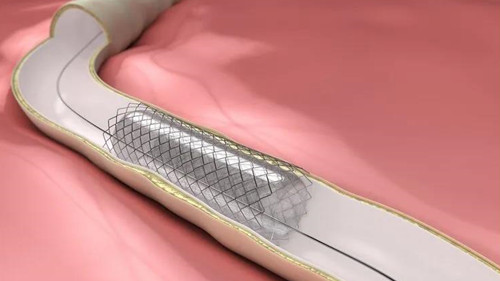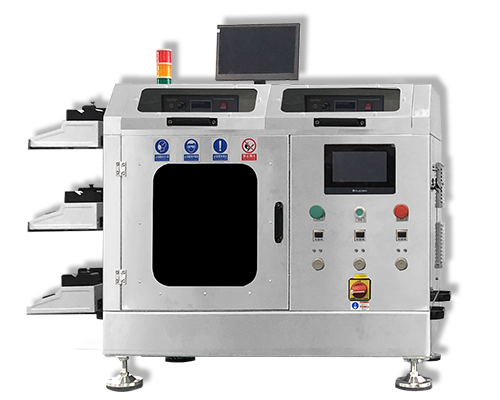Interventional Stent Coating
Interventional Stent Coating – Medical Coating Technology – Cheersonic
The drug-eluting stent (DES) introduced in 2000 successfully solved the problem of restenosis of the previous bare metal stent (BMS) and became one of the milestones in the history of coronary interventional therapy. Permanent polymer coatings on traditional DES can lead to chronic inflammation of the vessel wall and become an important cause of late stent thrombosis (ST). The subsequently developed degradable polymer-coated stents usually use polylactic acid as the drug-loading coating. After the drug is completely released, the coating can be completely degraded after 6 to 10 months, which minimizes the impact of the coating on the blood vessel wall. Reduce the risk of late stent thrombosis.
However, at present, the development of DES has entered a bottleneck period. Whether it is the improvement of stent platform, stent coating or anti-proliferative drugs, the impact on stent efficacy has been small. It is undoubtedly safe to improve the safety of stents when the efficacy of various stents is comparable. is a good choice. At this point, stent manufacturers have made many attempts, such as polymer-free coating technology, asymmetric coating, surface groove technology, eG™ technology, and Ti-O film, all of which show the innovative ability of stent manufacturers.

In recent years, magnesium alloys have become a research hotspot in the field of degradable cardiovascular stents. The study found that the key problem of magnesium alloy vascular stents is that the degradation rate in the human body is too fast, which leads to the premature loss of mechanical support of the stent. In order to slow down the degradation rate of magnesium alloy vascular stents, domestic and foreign scholars have carried out a lot of targeted research, mainly focusing on improving the corrosion resistance of biomedical magnesium alloys through surface modification, thereby reducing the degradation rate. For example, titanium oxide, polylactic acid, PLGA, PCL, magnesium fluoride and other protective coatings with good biocompatibility are prepared on the surface of magnesium alloys by various means, which can improve the degradation behavior of magnesium alloys. Alloys such as titanium alloys and magnesium alloys are increasingly used in the development of biomedical materials and devices because of their good mechanical properties and biocompatibility. The biomedical magnesium alloy material can be degraded and absorbed in the human body.
1. Polymer-free coating technology
In order to control the release of drugs, the drug-loaded coating materials of traditional DES use polymer materials, which can stimulate the continuous oxidative stress and inflammatory hypersensitivity reactions of the stent and its adjacent segment arteries, which may It will damage the endothelialization process and vascular endothelial function of the stent, and may lead to the occurrence of late stent malapposition. All these factors may be the susceptibility factors for stent thrombosis in the late stage of DES, especially in the very late stage. The polymer-free coating technology further ensures safety, avoids the introduction of ineffective foreign bodies, facilitates late vascular endothelialization, and reduces the probability of thrombosis.
2. Asymmetric coating technology
In previous studies, there was no significant difference in the total thrombosis rate between DES and BMS in the first year after implantation, but the incidence of very late stent thrombosis in DES after 1 year was significantly higher than that in BMS, which may be related to traditional DES drug loading. The design of the coating is related to ① the drug-loaded coating of the traditional DES is a symmetrical design, that is, there are drug coatings on the side of the vessel wall and the inner side of the vessel lumen of the stent. Antiproliferative drugs gradually released from the coating on the side of the stent wall can inhibit the excessive proliferation of smooth muscle cells in the vessel wall, thereby significantly reducing the incidence of in-stent restenosis; however, the antiproliferative drugs gradually released from the coating on the inner side of the vessel lumen not only Lack of beneficial biological effects, on the contrary, inhibits the endothelialization process of the stent and damages the vascular endothelial function of the stent and its adjacent segments. ② The drug-loaded coating materials of traditional DES are all non-biodegradable polymers, which persist even after the contained drug is completely released. All these factors may be the susceptibility factors for stent thrombosis in the late stage of DES, especially in the very late stage. Therefore, improvements in coating design have the potential to overcome the inherent shortcomings of conventional DES.
The coating of the new asymmetric and degradable coating DES is designed to be asymmetric, that is, only the degradable polymer coating loaded with anti-proliferative drugs is coated on the vessel wall side of the stent, and there is no drug coating on the inner side of the vessel lumen. Endothelial toxicity caused by drug release from the inside of the vascular lumen can be avoided.
3. Surface groove technology
Different from traditional drug-eluting stents, the coating technology with grooves on the surface has a lower amount of drug and polymer, that is, the drug coating is only stored in the grooves on the outer surface of the stent, and the drug is only directed to the vessel wall after stent expansion. The drug release rate is effectively controlled by the polymer, so as to achieve the effect of maintaining an effective therapeutic concentration in the blood vessel for a longer time with a smaller amount of the drug.
4. eG™ Technology
With biodegradable drug coating and electrografting technology (electrografting, eG™) inert coating technology, it can solve the problem of coating rupture after compression or expansion of conventional stents, and reduce endothelialization delay caused by coating cracks. Ensure product effectiveness and long-term safety. Clinical studies have shown that eG™ can promote the process of re-endothelialization after stent implantation after the biodegradable coating has degraded.
5.Ti-O film
In recent years, Chinese scientists have discovered that n-type semiconductor, rutile-structured titanium oxide (Ti-O) has a significant inhibitory effect on the conceptual change of adsorbing fibrinogen and the enzymatic activation of platelets. The prepared titanium oxide film can promote endothelial cells. Functions of growth and intimal repair. At the same time, the design of the coating is based on the sequential functional layer of “early anti-stenosis, late-stage anti-thrombosis”. The early degradable polymer drug coating can effectively inhibit the occurrence of stenosis, and the titanium oxide film can promote blood vessels after the release of the later drug coating is completed. Endometrial repair. At the same time, because the titanium oxide film has a long-term anticoagulant effect, it can effectively inhibit the occurrence of late thrombosis in the stent.
The fundamental reason why the surface coating can effectively reduce the degradation rate of magnesium alloys is to form a corrosion-resistant layer on the surface of magnesium alloys, thereby blocking the direct contact between the magnesium substrate and the corrosive environment. Among various coating materials, inorganic coatings are the most widely used materials for surface modification of magnesium alloys, such as TiO2, ZrO2, ZnO, etc., which can improve the corrosion resistance of magnesium alloys to a certain extent and slow down the degradation of magnesium alloy substrates. rate. Among them, titanium oxide coating, as an inorganic inert coating, can effectively prevent the release of metal ions and play a good role in corrosion protection. In addition, the titanium oxide coating has excellent anticoagulant properties, and shows a good application prospect as a surface coating of magnesium alloy vascular stents. Some researchers used a magnetron sputtering process to prepare a titanium oxide coating on a biological magnesium alloy, which confirmed that the coating can significantly reduce the degradation rate of magnesium alloys.

The ultrasonic drug-eluting stent spray coating system can be applied to the preparation of polymer coating for preventing vascular restenosis on the surface of implantable drug-eluting stent. Compared to conventional two-fluid nozzles, ultrasonic nozzles can spray a more uniform drug coating that completely covers the stent without the orange peel and adhesion to a complex stent. The soft atomized spray adheres well to surfaces and coating morphology characteristics can be adjusted by modifying process parameters. In addition, the stent coating obtained by ultrasonic spray coating technology is thinner than dip-coating. Ultrasonic spray coating technology can precisely control the amount of drug sprayed on the stent, making the control of the spraying more precisely.
The special nozzle for ultrasonic stent with national patent can realize accurate application of medicine, and the fixture specially equipped for stent is convenient for loading and unloading. This device has the characteristics of supporting multiple series and multiple types of stents, high drug utilization, accurate drug delivery, and high uniformity of the stent membrane layer.

